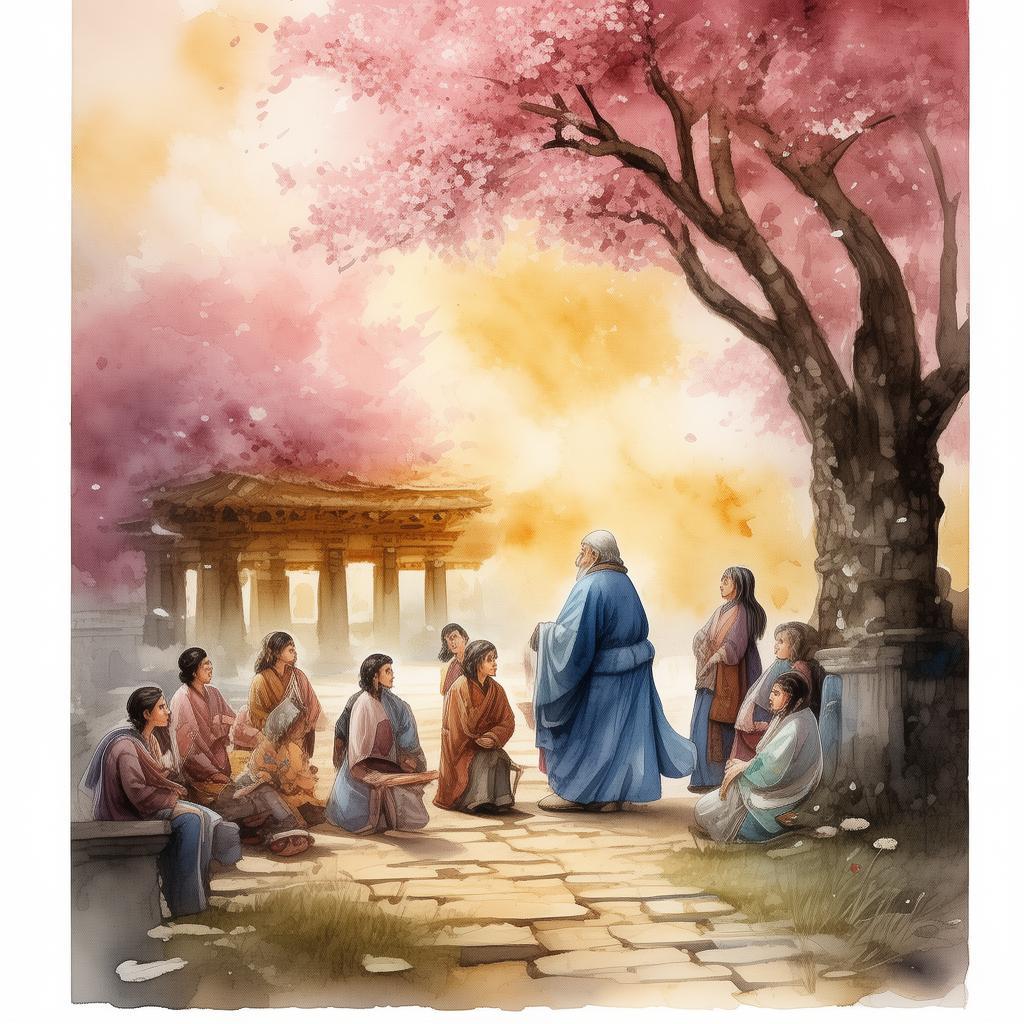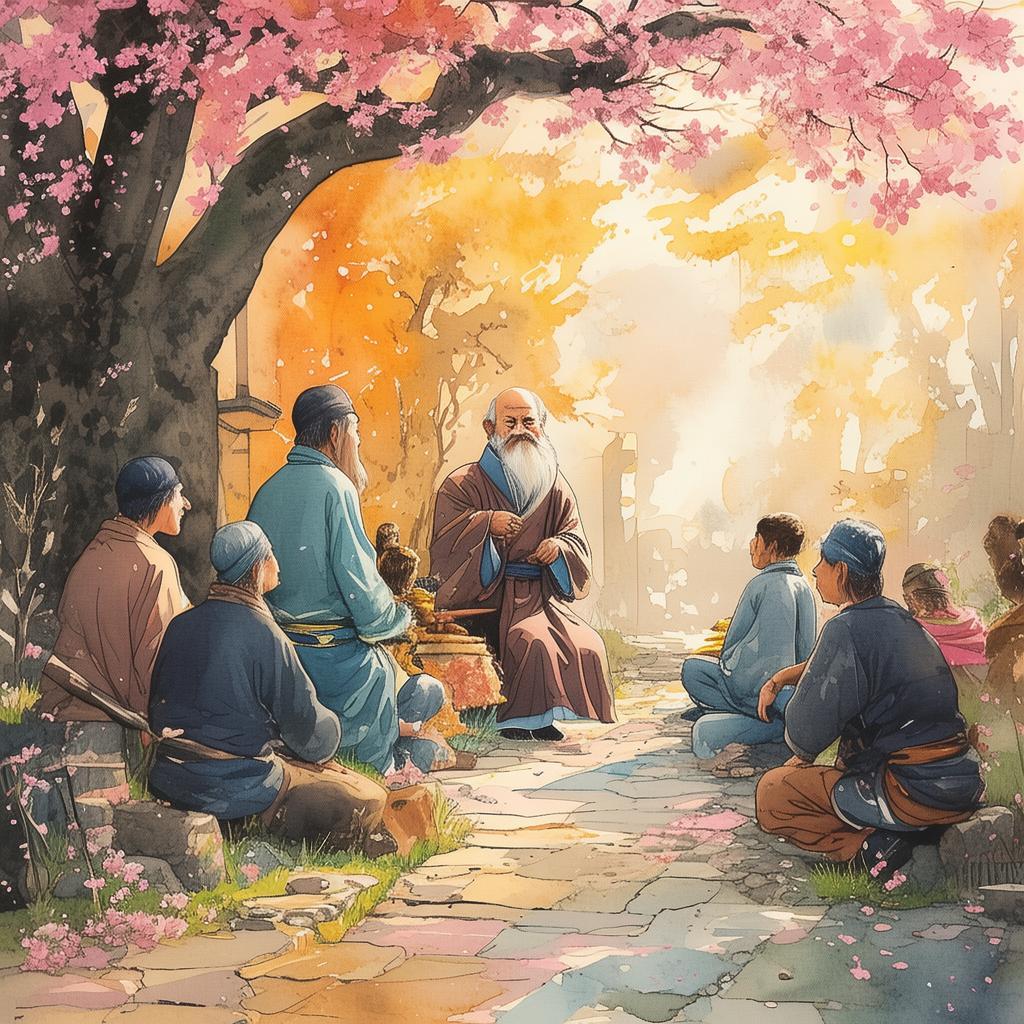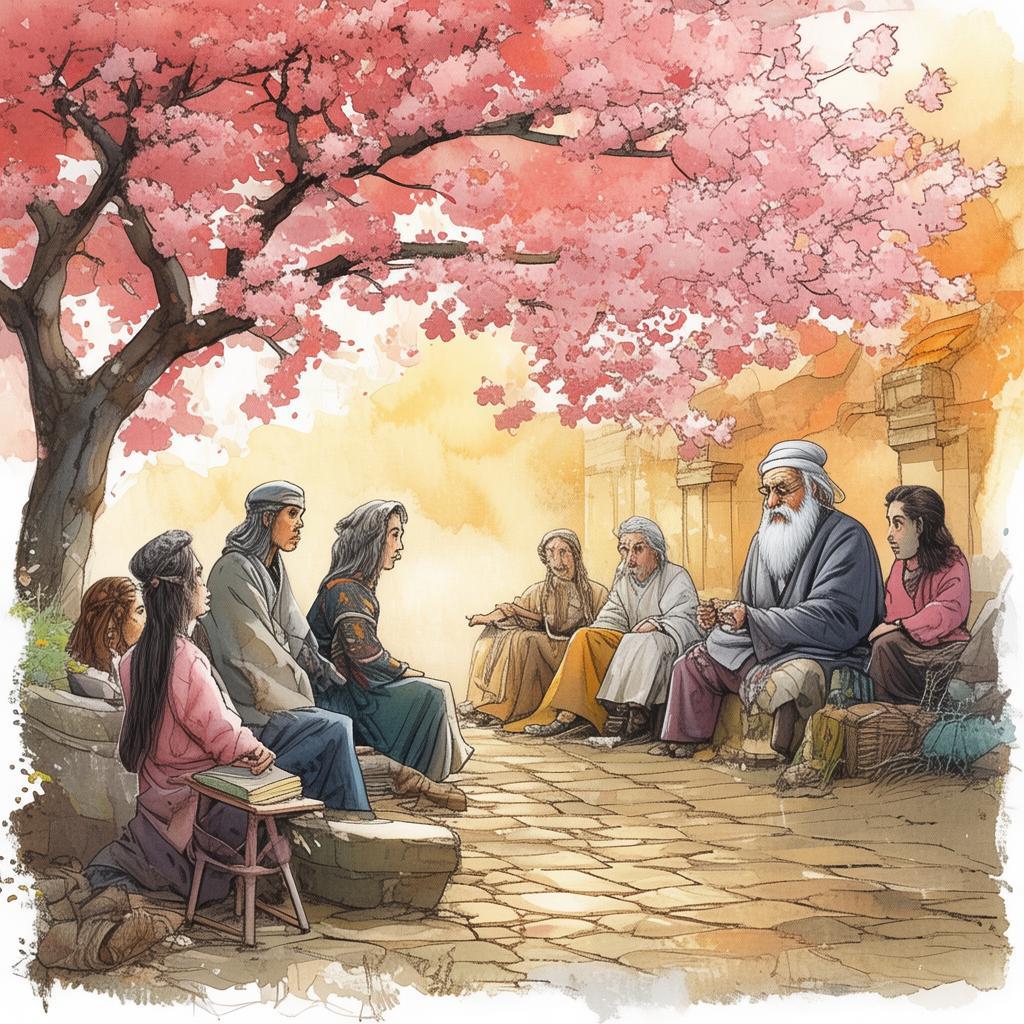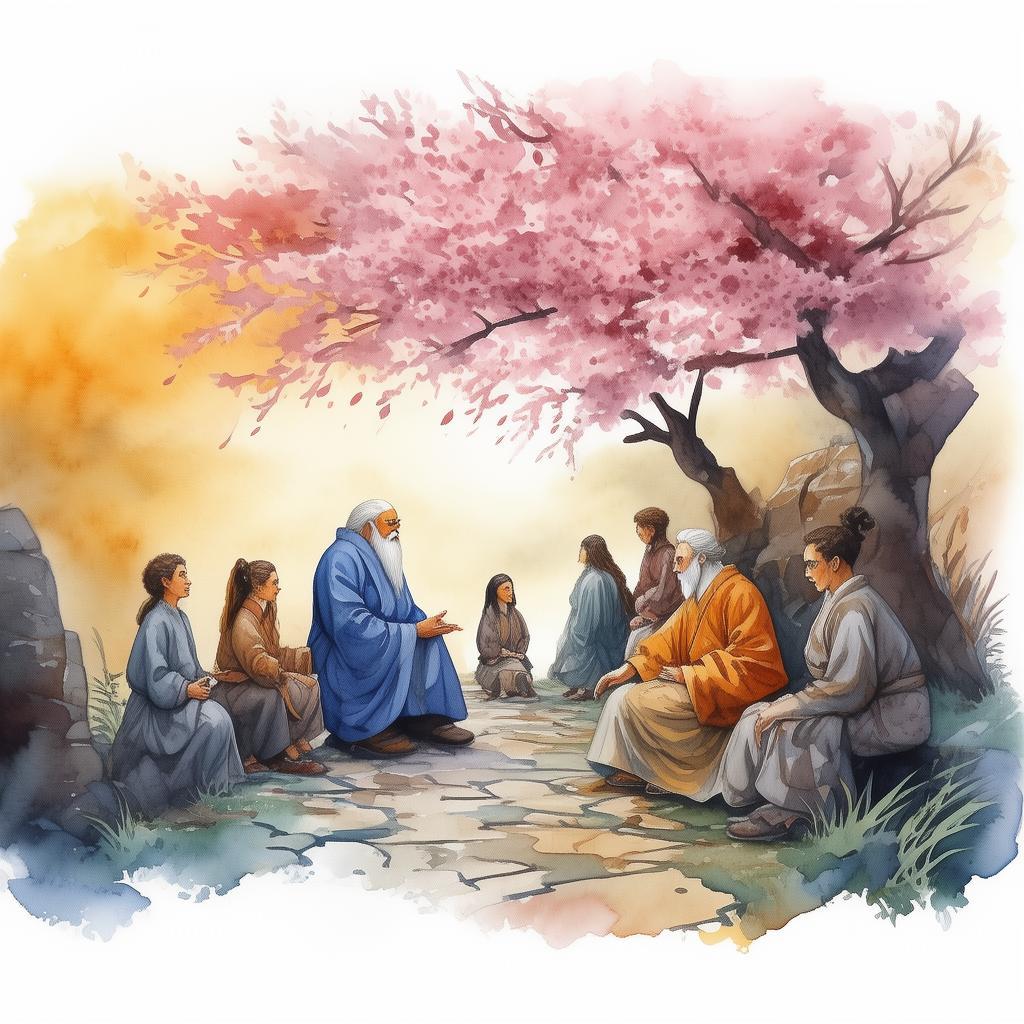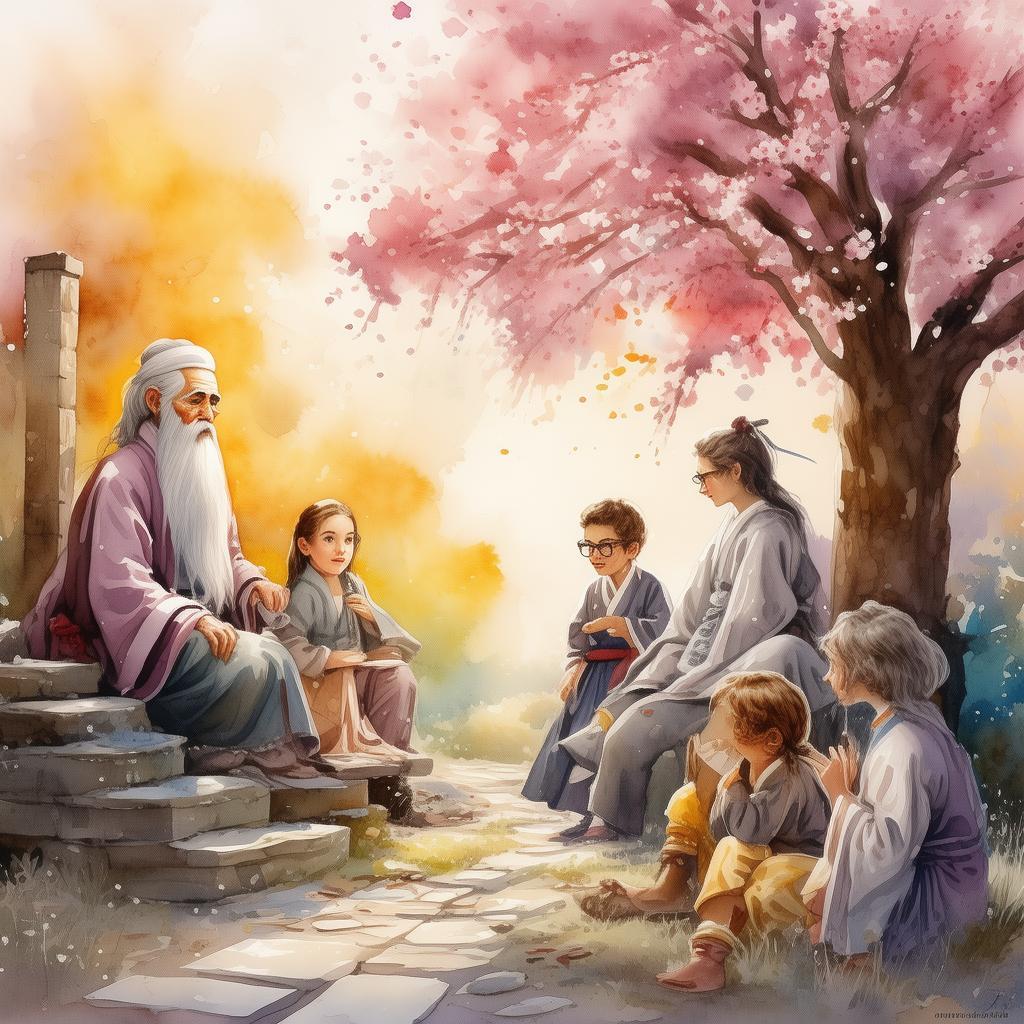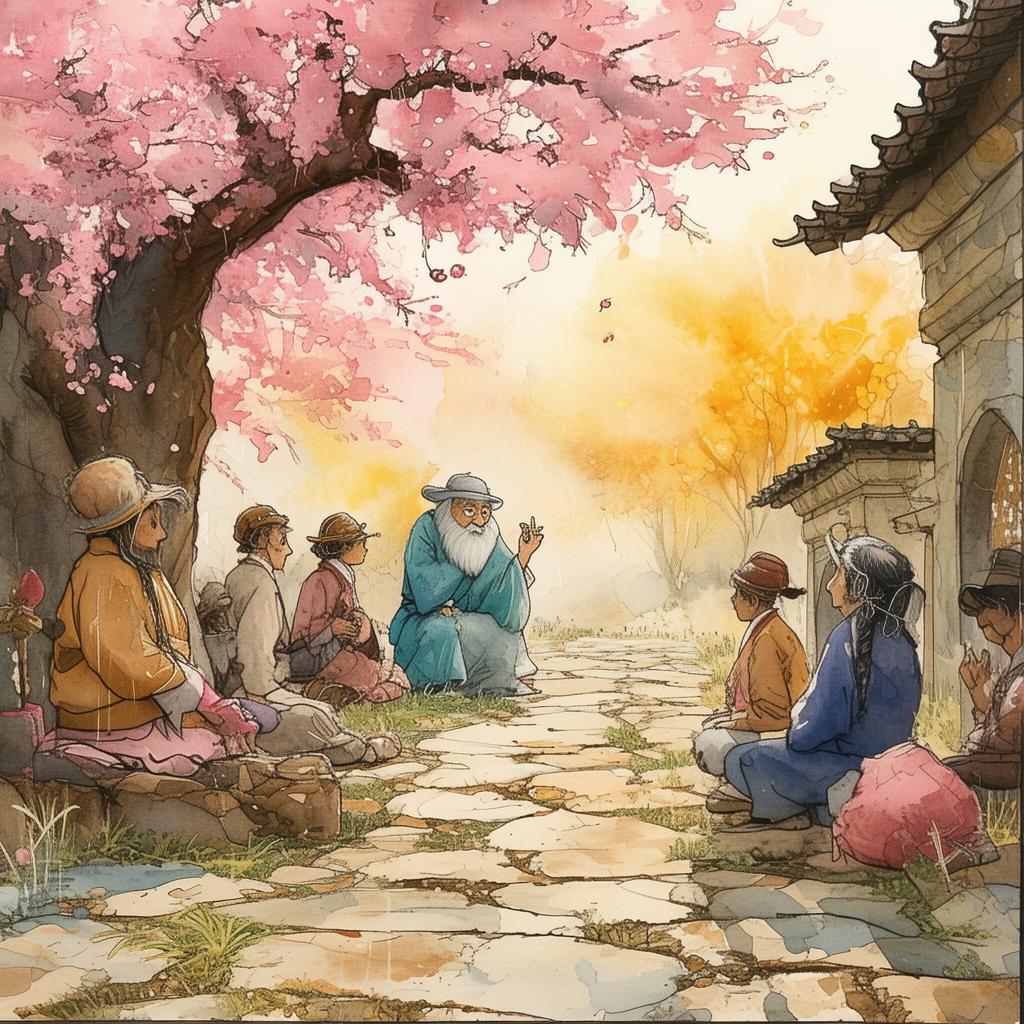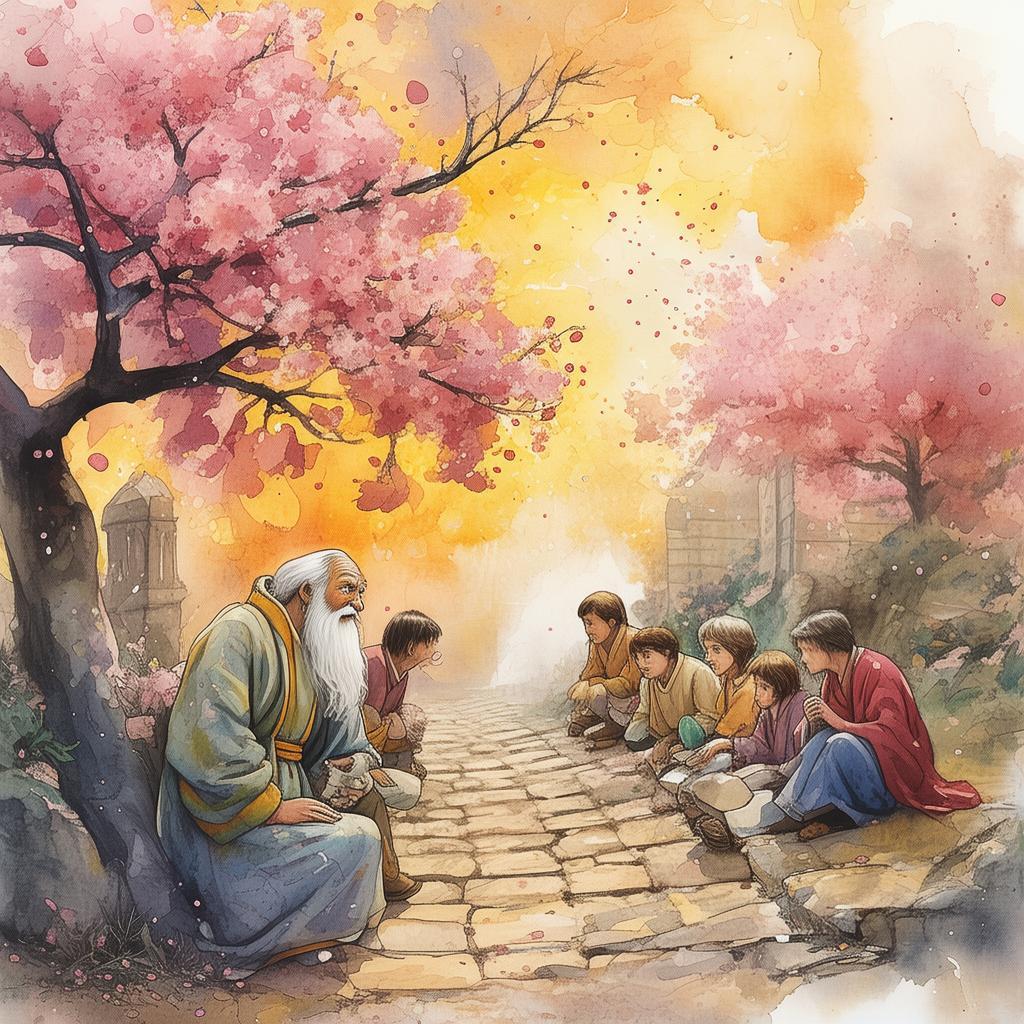The Ephemeral Dream of the Wandering Scholar
In the ancient city of Linyi, nestled between rolling hills and the shimmering rivers, there lived a wandering scholar named Ming. Ming was known for his vast knowledge and insatiable curiosity about the mysteries of the universe. His life was a tapestry of endless exploration, seeking wisdom in every corner of the world. It was during one of his travels that Ming stumbled upon a peculiar book, bound in leather and adorned with intricate carvings of celestial bodies.
The book was titled "The Maxims of the Wandering Scholar: A Journey Through Time and Space." Its pages were filled with cryptic maxims and enigmatic diagrams, hinting at the possibility of traveling through the very fabric of reality. Ming was captivated by the book's promise and, driven by his insatiable thirst for knowledge, he decided to decipher its secrets.
As Ming delved deeper into the Maxims, he discovered a ritual that allowed him to harness the power of time and space. With each incantation, he felt the universe around him shift and twist, and soon he found himself transported to distant lands and eras. He visited the bustling markets of ancient Egypt, the grandeur of the Roman Empire, and the serene beauty of the Japanese Zen gardens.
However, the longer Ming traveled through time and space, the more he realized that his greatest discoveries were not in the grandeur of civilizations past, but in the ephemeral dreams of the people he encountered. In a bustling marketplace in ancient Egypt, he watched a humble merchant dream of grand adventures, his eyes sparkling with unspoken desires. In the heart of the Roman Empire, he listened to a soldier's dream of peace and tranquility, the echoes of his sorrowful past resonating in the silent streets of Rome. And in the serene gardens of Japan, he witnessed a Zen master's dream of enlightenment, his mind free from the trappings of the material world.
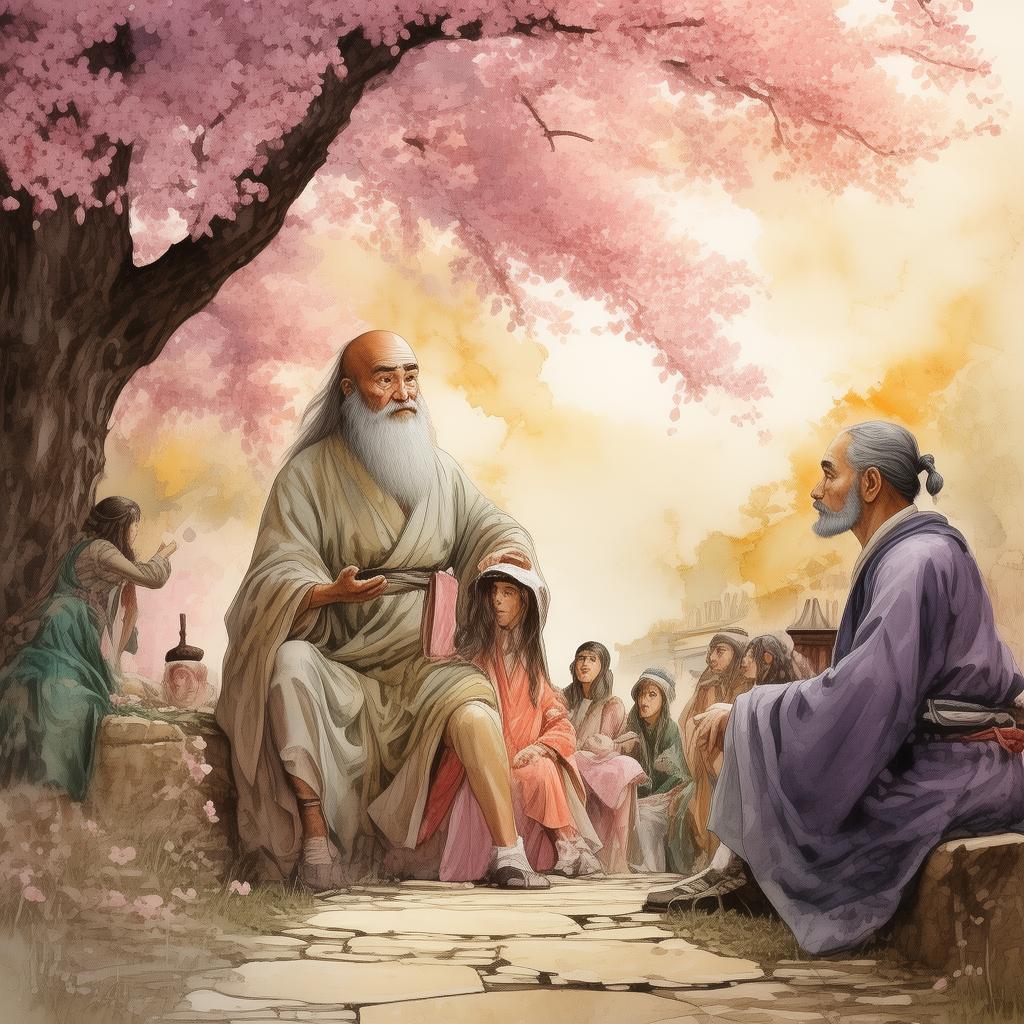
Ming began to understand that the true essence of his journey was not to see the wonders of the past and future, but to experience the dreams and aspirations of the people who had walked this earth. He realized that the greatest treasures were not in the tangible achievements of civilizations, but in the intangible dreams that fueled the human spirit.
As Ming continued his journey, he encountered a young girl in the ruins of an ancient city. Her eyes were filled with a deep sadness, and she spoke of a dream that had eluded her for years. Ming listened intently, and as he listened, he felt a connection to her dream, a dream that was not so different from his own.
With newfound insight, Ming decided to return to the present, to the city of Linyi, and to share his experiences with the world. He wrote a book, inspired by "The Maxims of the Wandering Scholar," detailing his journey through time and space and the ephemeral dreams he had encountered along the way.
The book became an instant sensation, captivating the hearts and minds of readers everywhere. Ming's words resonated with people, reminding them that the greatest wonders of the world were not to be found in the distant past or distant future, but in the dreams and aspirations of those who lived in the present moment.
The story of the wandering scholar, his journey through time and space, and the ephemeral dreams he encountered, became a timeless tale, a reminder that the greatest treasures of life are often found in the fleeting moments of our dreams and aspirations.
✨ Original Statement ✨
All articles published on this website (including but not limited to text, images, videos, and other content) are original or authorized for reposting and are protected by relevant laws. Without the explicit written permission of this website, no individual or organization may copy, modify, repost, or use the content for commercial purposes.
If you need to quote or cooperate, please contact this site for authorization. We reserve the right to pursue legal responsibility for any unauthorized use.
Hereby declared.



